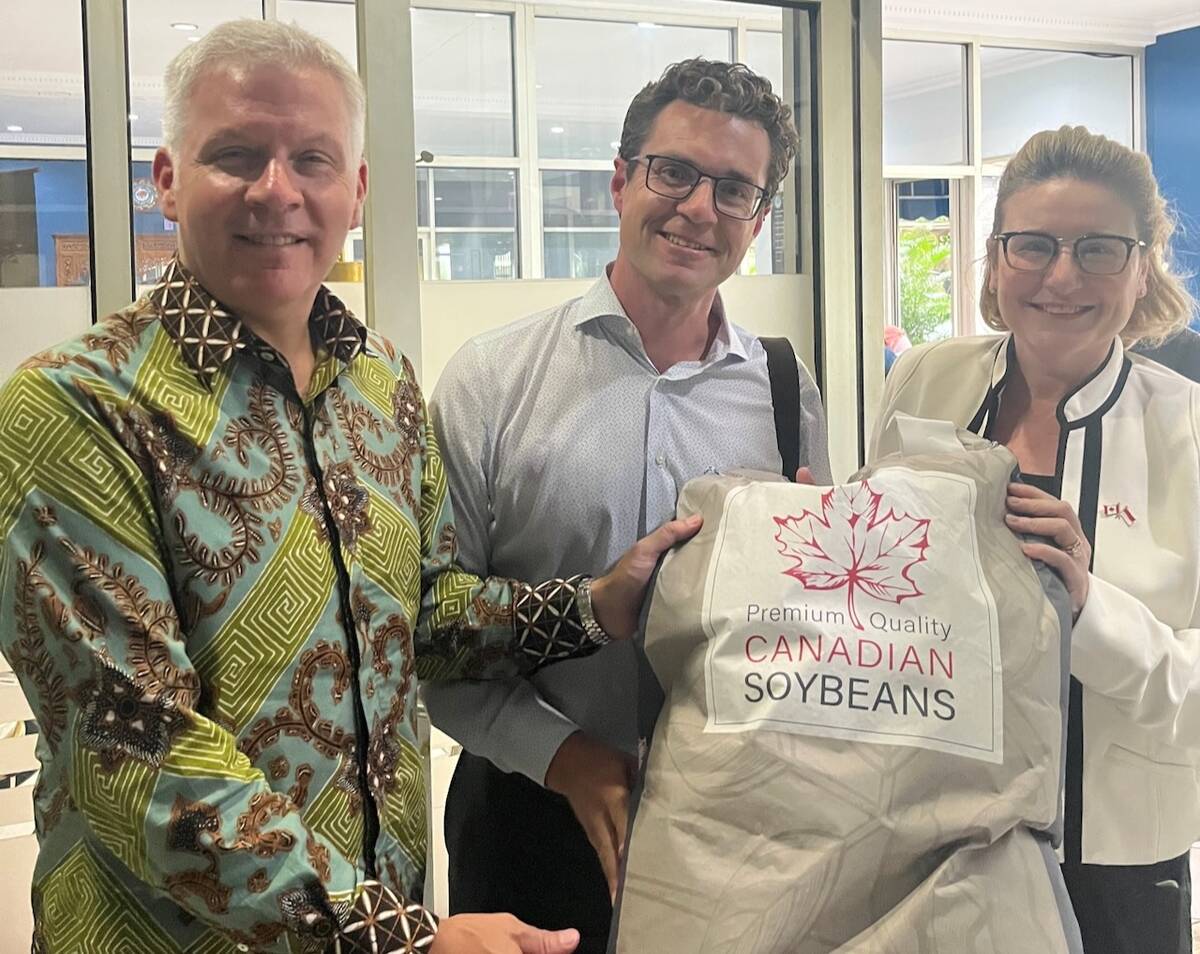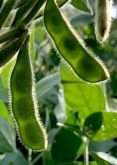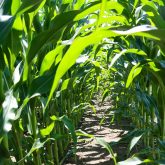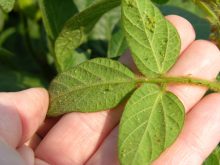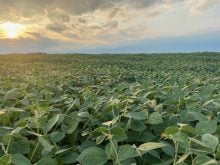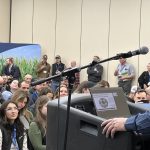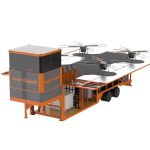“We’re very loyal to U.S. soy, and no one knows what that guy is going to do tomorrow.”
It’s not surprising that in this unprecedented time, things are a bit complicated for our customers and their governments – both in near constant negotiation with U.S. counterparts.
Against this backdrop, as the executive director of Soy Canada, I travelled with our new federal agriculture minister Heath MacDonald to Indonesia to hear directly from our customers, and to tell our own story face to face.
You connect with people much better when you’re sitting across the table, rather than across the world.
But to appreciate how Indonesia and our trip impacts farmers, it helps to understand a little about the country and our customers.
It started like this. The lights flashed as we cleared customs without seeing a human, a camera and animated screen whisking us through. We had arrived in a burgeoning market of almost 300 million people, one of the fasted growing on the planet.
We were in Indonesia because they eat a lot of what Canadian farmers produce, especially soy and wheat. And in this part of the world, relationship by email only goes so far.
The pace of growth and development was evident at every turn, from the contrast of endless towers of glass to the chaotic bustle of small businesses hawking everything from fruit to car parts along bumpy roads.
We were a world away from Canada’s space and blue sky, but connected deeply by food. We were connected deeply because of our $200 million in annual soybean exports, and the sheer size of their market and growth rates. If North America is driving a Chev, Indonesia is driving a Ferrari.
Connecting with customers and their government at this interesting time in trade proved helpful. Although we’re all affected by the U.S. unilaterally rewriting long-standing trade norms, Indonesia is the customer for agri-food exporters from around the world.
Indonesia has its own way of looking at the world. Our customers there are sought after by many competitors like us from the Americans to the Australians. And they have options all the way from Argentina to the Black Sea.
It was evident we face fierce competition.
“You need to learn from the U.S., they’re here all the time and have been for the last 20 years,” said a major soy customer. “Our tempe and tofu manufacturers love U.S. soy.”
Indeed, they do. Indonesia is one of the world’s largest markets for soybeans used for human food, with most of it coming from the U.S. They consume three times the amount of soybeans for food as Japan, with overall food and beverage sales growing at an average of six per cent per year.
You get a much more candid view of what’s important to our customers when you’re sitting across the table, rather than across the world.
In their facility, we watched a video funded by U.S. soy featuring their employees wearing U.S. soy aprons and sampled tempe chips in a bag emblazoned with the Sustainable U.S. Soy logo. We spoke to people who just returned from their third U.S. soy buyer conference this year.
“We’ve tried Canadian soy, and it’s really high quality,” one manufacturer said. “We like your white-eyed beans. Our customers love the white tempe it produces.”
The work of our exporters and value chain to cultivate the market was creating a glimmer of hope.
As we picked up the bag of beans emblazoned with the red maple leaf in their storeroom, our pride got a much-needed lift. We continued to walk through their factory, seeing the rectangular bags of tempe on rows of shelves evolve from swelled and split beans to being enveloped in white as microbiology did its thing to create a solid bar of soy protein ready for slicing and frying.
Multiple brands and labels decorated the clear plastic tubes, with one even sporting the famous butterfly logo – non genetically modified soybeans for the discerning customer.
Later in the day when I visited a grocery store, I was astonished to see these two products side by side in the grocery store with the non-GM bag selling for double the price.
From the concrete reality of what someone buys at the grocery store and then eats for dinner, the elephant in the room was the new U.S. approach to trade. Deals were happening everywhere, including deals to buy U.S. agricultural products.
“Mr. Trump drives a hard bargain,” said their president. That bargain means that Indonesia now faces 19 per cent tariffs to export to the U.S., while committing to buying more U.S. ag products and further opening their market to U.S. products.
The question on everyone’s mind, what does this mean for Canadian agri-food exports?
It’s not quite clear.
What is clear, is that major buyers of Canadian soy have committed to buying more U.S. soy. Virtually all the soy they buy is either from the US or Canada.
Memorandums of Understanding have been signed by many of our customers. One million tonnes of soy. A million tonnes of soybean meal. A million tonnes of wheat. There’s talk about reporting on purchases every three months.
While the exact impact is not quite clear, the pressure to buy more from the U.S. and less from others like Canada is crystal clear.
As the largest economy in the world, the U.S. looms large even if it is on the other side of the world. But Indonesia doesn’t align themselves with any single country; they buy from everyone including the Russians, Chinese, Ukrainians and the Brazilians. Indonesia will do what’s best for Indonesia.
And that is what ultimately hits home for Canadian farmers and the value chain. Our customers around the world will do what’s best for themselves based on what they’re offered.
What we saw is that we face extreme competition. We may offer the best soy to them, but it’s the overall value we provide and what they think of our soy that matters.
When we sit across the table and hear what matters to them, we’re better placed as industry and government to do what’s required to grow the value of our exports. And that’s a good thing for farmers and the value chain, because every dollar from exports drives profitability and growth in Canada.
Brian Innes is executive director of Soy Canada.



